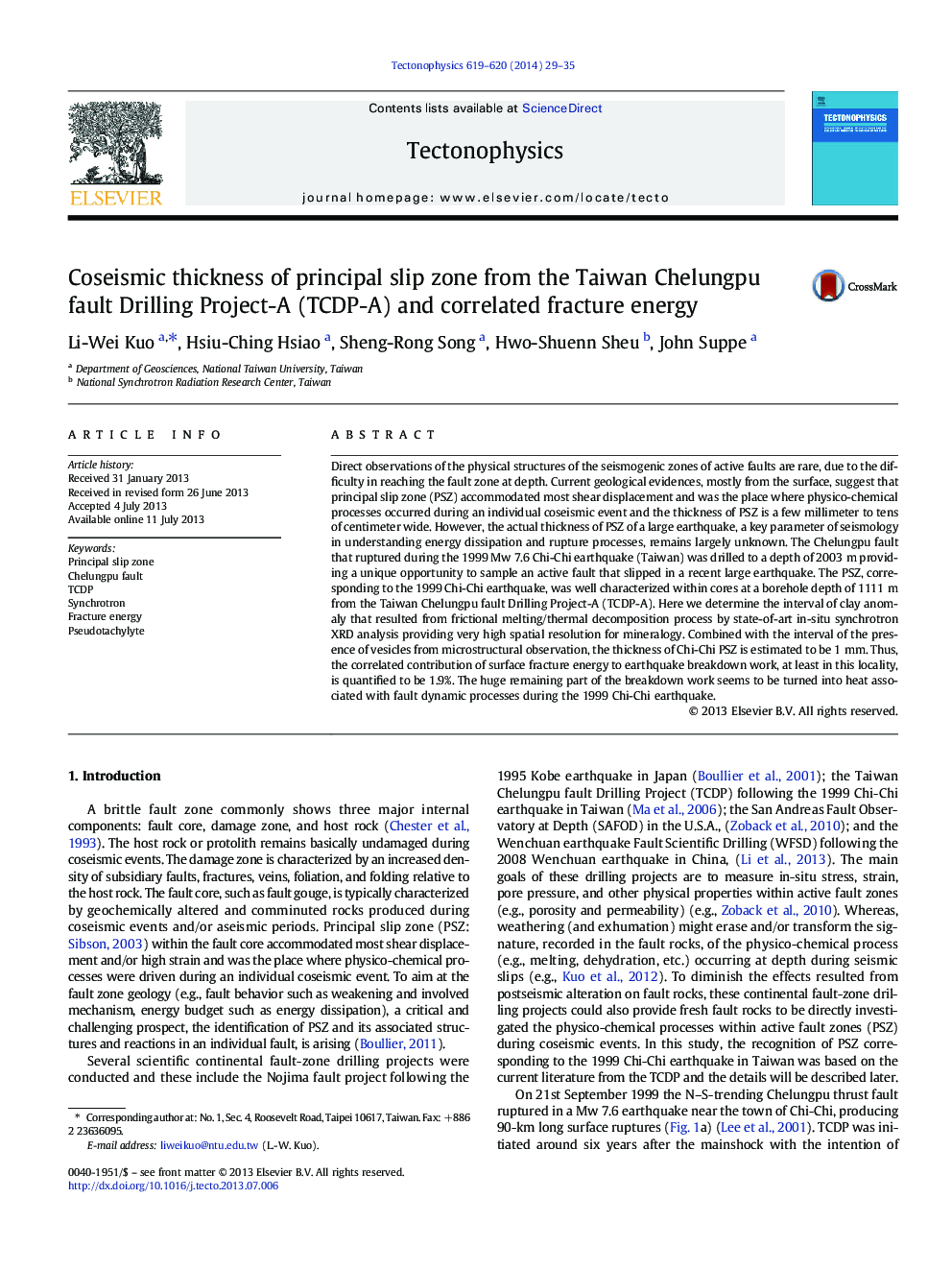| کد مقاله | کد نشریه | سال انتشار | مقاله انگلیسی | نسخه تمام متن |
|---|---|---|---|---|
| 4692011 | 1636770 | 2014 | 7 صفحه PDF | دانلود رایگان |

• Mineral phase was determined by state-of-art in-situ synchrotron XRD analysis.
• The interval of clay anomaly is 1 mm thick defined as the thickness of PSZ.
• Ratio of surface fracture energy to earthquake breakdown work is about 1.9%.
• The remaining breakdown work was turned into heat during the 1999 Chi-Chi earthquakes.
Direct observations of the physical structures of the seismogenic zones of active faults are rare, due to the difficulty in reaching the fault zone at depth. Current geological evidences, mostly from the surface, suggest that principal slip zone (PSZ) accommodated most shear displacement and was the place where physico-chemical processes occurred during an individual coseismic event and the thickness of PSZ is a few millimeter to tens of centimeter wide. However, the actual thickness of PSZ of a large earthquake, a key parameter of seismology in understanding energy dissipation and rupture processes, remains largely unknown. The Chelungpu fault that ruptured during the 1999 Mw 7.6 Chi-Chi earthquake (Taiwan) was drilled to a depth of 2003 m providing a unique opportunity to sample an active fault that slipped in a recent large earthquake. The PSZ, corresponding to the 1999 Chi-Chi earthquake, was well characterized within cores at a borehole depth of 1111 m from the Taiwan Chelungpu fault Drilling Project-A (TCDP-A). Here we determine the interval of clay anomaly that resulted from frictional melting/thermal decomposition process by state-of-art in-situ synchrotron XRD analysis providing very high spatial resolution for mineralogy. Combined with the interval of the presence of vesicles from microstructural observation, the thickness of Chi-Chi PSZ is estimated to be 1 mm. Thus, the correlated contribution of surface fracture energy to earthquake breakdown work, at least in this locality, is quantified to be 1.9%. The huge remaining part of the breakdown work seems to be turned into heat associated with fault dynamic processes during the 1999 Chi-Chi earthquake.
Journal: Tectonophysics - Volumes 619–620, 21 April 2014, Pages 29–35